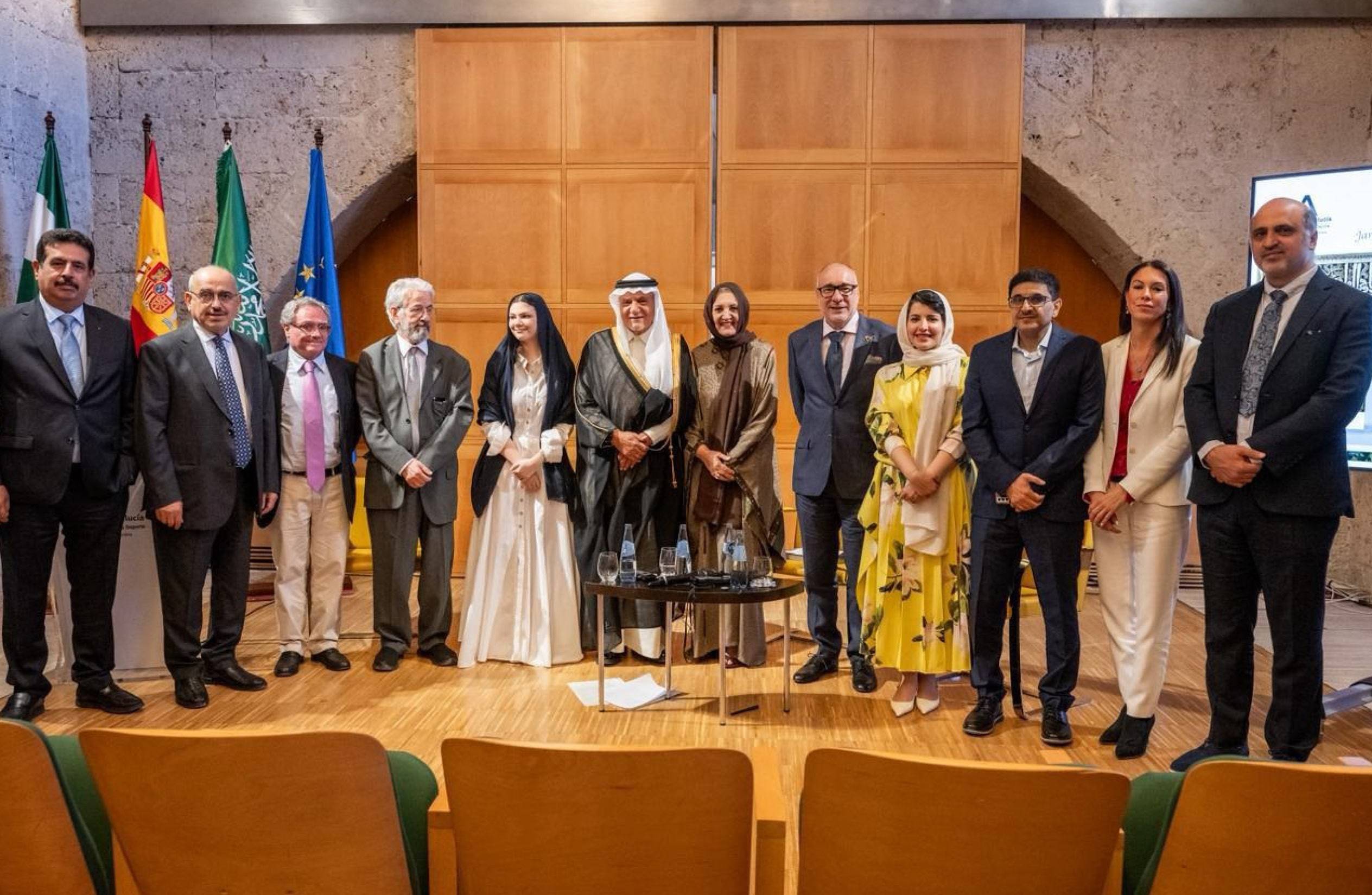HRH Prince Turki AlFaisal launched the book "Riyad al shuara’ fi qusur al Hamra’,” highlighting poetry as a testament to cultural harmony in Andalusia
The “Riyad al shuara’ fi qusur al Hamra’,” book launch ceremony took place on Tuesday, May 20, 2025, at the Alhambra Palace in Granada, under the patronage of HRH Prince Turki AlFaisal, Chairman of the Board of Directors of the King Faisal Center for Research and Islamic Studies. The book, authored by Dr. Abd Al-Aziz Al-Manie, a laureate of the King Faisal International Prize, and Dr. José Miguel Puerta Vílchez, a member of the Royal Academy of Fine Arts, was authored with the support of the General Secretariat of the King Faisal International Prize.
During his speech at the event, HRH Prince Turki AlFaisal expressed his delight in being part of the cultural celebration honoring the Alhambra Palace as a unique worldwide icon that symbolizes the fusion of civilizations and the exchange of cultures. His Highness remarked, “I am delighted to join you in this global monument, appreciating not only its beauty and rich history but also the cultural significance it embodies, uniting Arabs, Muslims, and Spaniards.”
HRH pointed out that selecting Granada as the site for the book launch was a way to honor a place that symbolizes the core of our shared heritage and welcomes millions of visitors worldwide. HRH also shared personal memories, mentioning that his initial visit to the Alhambra Palace took place sixty-five years ago, and the captivating vision of “paradise” frequently referenced by both ancient and contemporary Arabs remained vivid in his mind. He specifically cited the Andalusian poet Lisan ad-Din Ibn al-Khatib, who composed:
It's time for generous rains to give you blessings profoundly
O time of our interaction in Andalus
Prince Turki emphasized the profound cultural significance of the Alhambra Palace, highlighting the enduring values of tolerance and coexistence reflected in Andalusia’s art, poetry, and architecture, which continue to influence global society. He elaborated that this ethos motivated both Saudi Arabia and Spain to champion interfaith and intercultural dialogue, leading to initiatives such as the United Nations Alliance of Civilizations and the King Abdullah bin Abdulaziz International Centre for Interreligious and Intercultural Dialogue (KAICIID). He remarked, “The Alhambra represents more than a physical edifice; it stands as a vibrant reminder of a multicultural past where Muslims, Christians, and Jews thrived in a setting filled with creativity and intellectual exchange.”
The book Riyad al-Shu’ara’ is a scholarly effort aimed at reviving the poetic writings found on the walls of the Alhambra palaces, emphasizing their artistic and cultural importance. The authors gathered these poems from Andalusian sources and associated them with their original placements within the palace. They provided annotations and commentary on the poems and endeavored to identify the poets whenever feasible. The book delves into texts from renowned spaces like the Meshwar, the Comares, the Hall of the Boat, the Palace of the Lions, and the Lindaraja Balcony. It also explores distinctive structures such as the Palace of the Dashes and the Tower of the Princesses, alongside inscriptions discovered on the tombstones of Nasrid monarchs in the Alhambra’s garden.
Published with support from the King Faisal International Prize and in collaboration with the Alhambra Administration and the Generalife, the book is a deluxe edition. It includes a visual appendix that allows readers to juxtapose the engraved text with the printed version, providing an all-encompassing reading experience that merges textual analysis with aesthetic appreciation.
The event concluded with speeches from Dr. Abdulaziz Alsebail, Secretary-General of the King Faisal International Prize, as well as representatives from other participating organizations. Subsequently, a seminar took place where the authors shared insights into the genesis of their work and their interpretations of the inscriptions. A celebratory luncheon followed, gathering guests in a joyous ambiance at the palace, which still resonates with the poetic legacy and historical significance.


